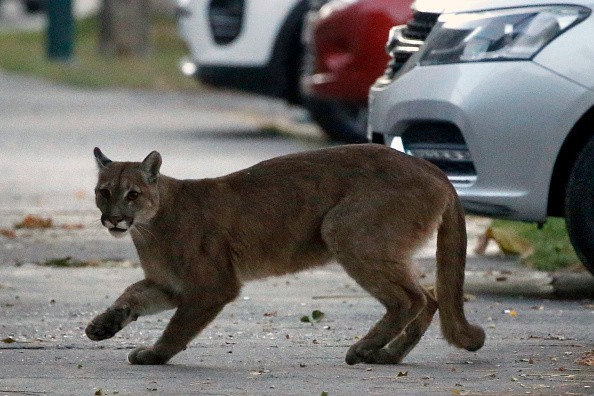National Park Service has succeeded in trapping its 99th mountain lion as part of an ongoing research of the group of big cats that inhabits the Santa Monica Mountains.

Mother Cat P-99
The mother cat, nicknamed P-99, is estimated to be 2 to 3 years old and was discovered in the western Santa Monica Mountains, as per park service officials.
According to an Instagram post by the park service that included a photo of the young mountain lion, she was given a full workup after her capture on Sept. 8, which included visually inspecting, collecting biological samples, conducting a physical checkup, and equipping her with a Satellite radio collar.
P-99 is currently part of a National Park Service study established in 2002 to learn how cougars living in and near the Santa Monica Mountains inhabit a city surrounded by dangerous roads and urban development.
According to Ana Beatriz Cholo, a communications officer for the Santa Monica Mountains Recreation Area, the study's coverage is closer to the coast of the 405 Freeway and north of the 101 Freeway, and does not encompass Simi Hills and even beyond.
While the exact number of pumas in the area is unknown, Cholo estimates that the area can sustain 10 to 15 mountain lions at any given time, excluding kittens, "because they need prey, they need their territory and the males typically really require quite a bit of space"- between 150 and 200 square miles. Officials are now keeping an eye on 13 mountain lions in the area using GPS collars.
The Study
Even some of the lions that took part in the nearly two-decade research have passed away, but their heritage continues in the vital data gathered by scientists and others who monitor the huge animals.
"We've learned so much," Cholo said, adding that the study's findings were used to help construct a wildlife bridge across the 101 Freeway in Agoura Hills, which will allow mountain lions to explore new habitat and find biologically distinct partners while avoiding speeding motorists on the busy highway.
Caltrans plans to start construction on the $87 million bridge at Liberty Crossing early next year. The lion community has been plagued by substantial interbreeding, officials claimed, due to their inability to move into new areas due to fractured habitat.

Genetic Diversity
According to DNA investigations, lions in the Santa Monica Mountains, and also another confined group in the Santa Ana Mountains south of Los Angeles, "have the lowest levels of genetic diversity ever documented in the West."
According to the service, the only group with lesser species variability was found in South Florida in the mid-1990s, when the state's cat community was on the verge of extinction.
Increased interbreeding, according to scientists, is starting to show as physical defects. P-81, a mountain lion with a crimped, L-shaped tail and yet one descending testicle, was discovered in March 2020. Several mountain lions with apparent deformities have also been seen, according to Cholo.
At the time, it was described as a "grave discovery" by Jeff Sikich, a wildlife biologist with the National Park Service, who added that it highlights the need for actions to provide better help to this species. Even so, the mountain lions aren't all unfortunate.
Related Article: Rare Mountain Lions Spotted in Kansas
For more news, updates about mountain lions and similar topics don't forget to follow Nature World News!
© 2025 NatureWorldNews.com All rights reserved. Do not reproduce without permission.





